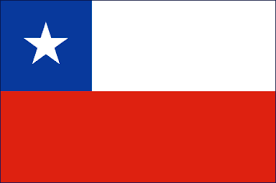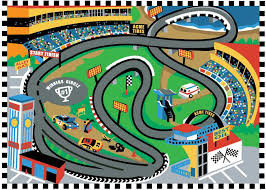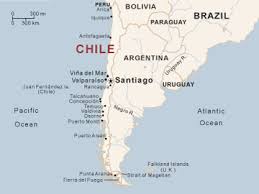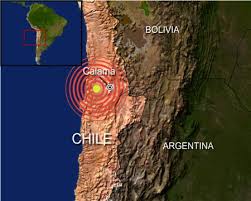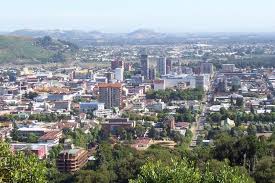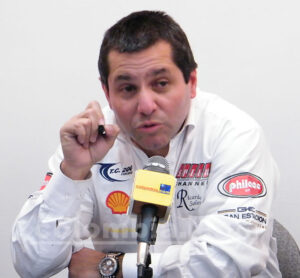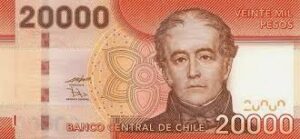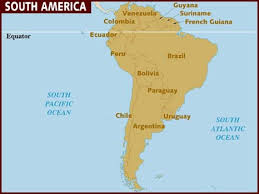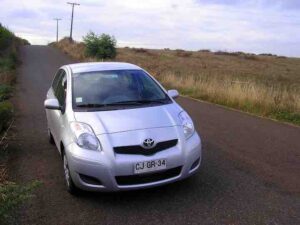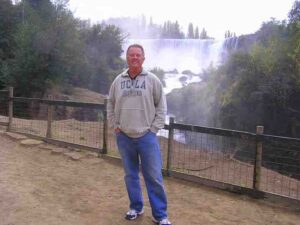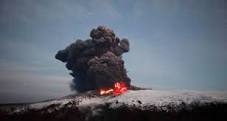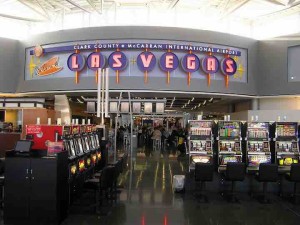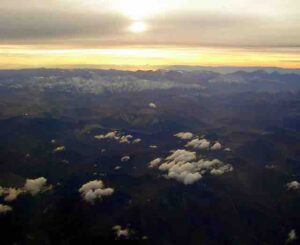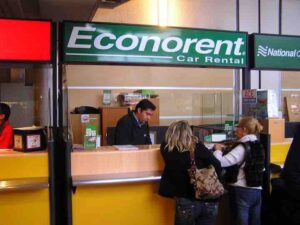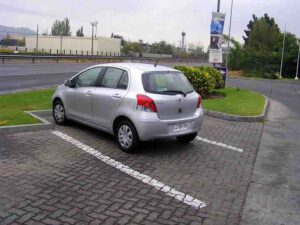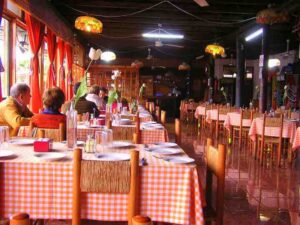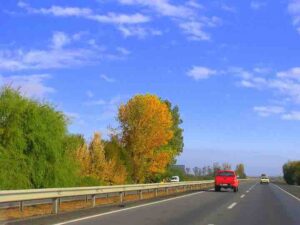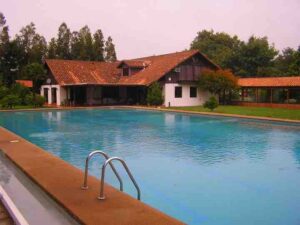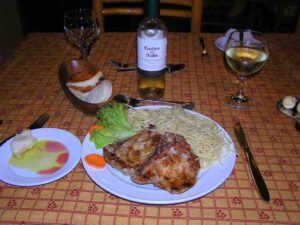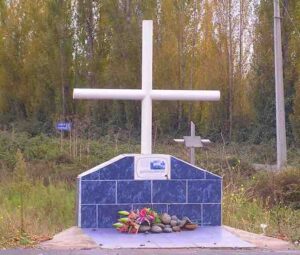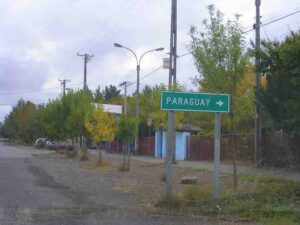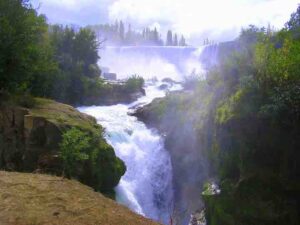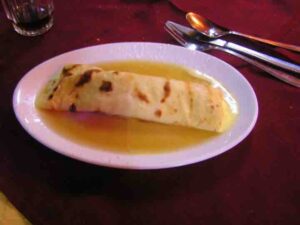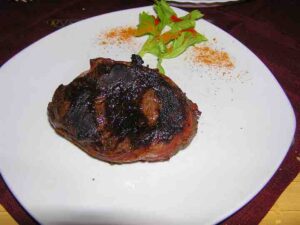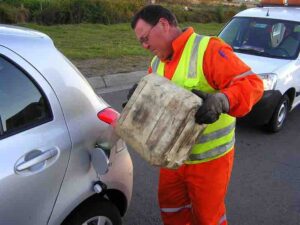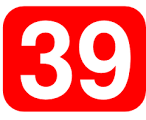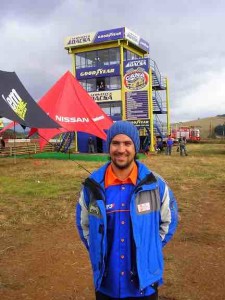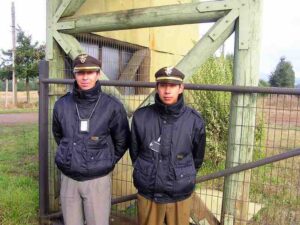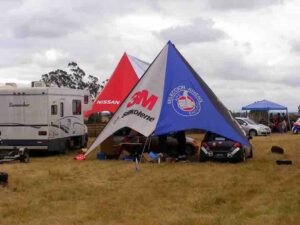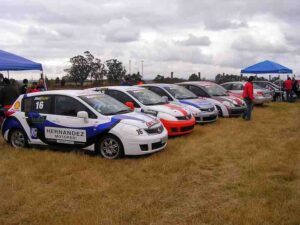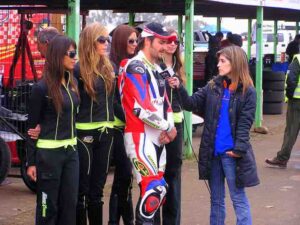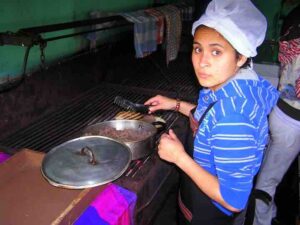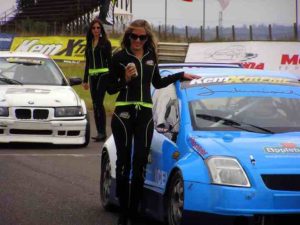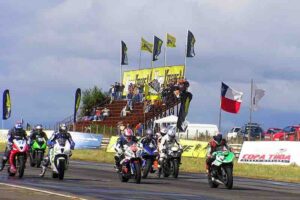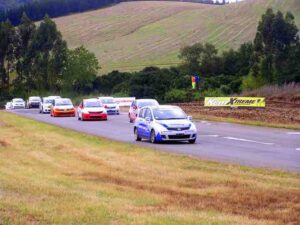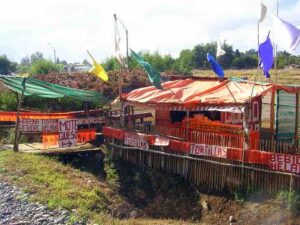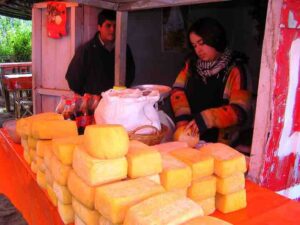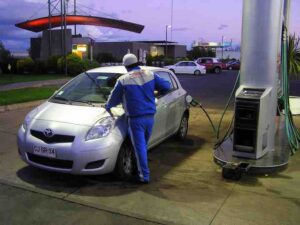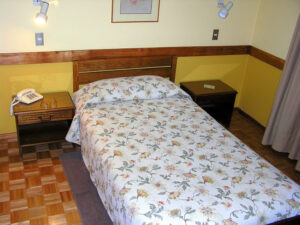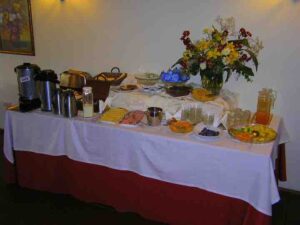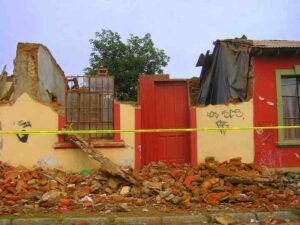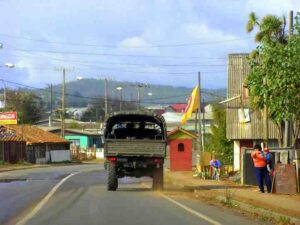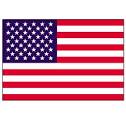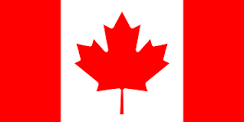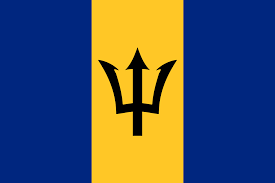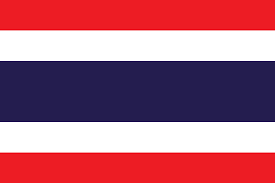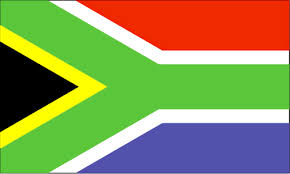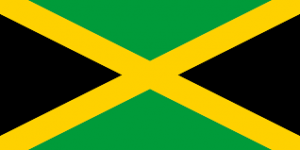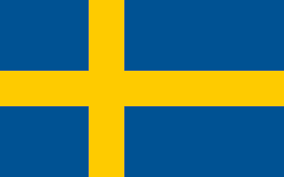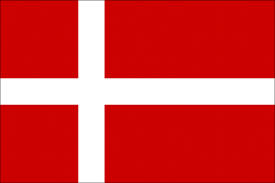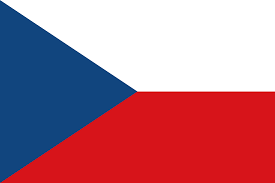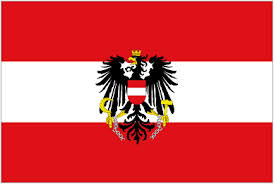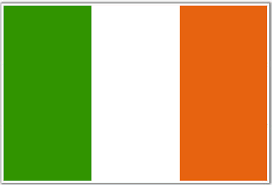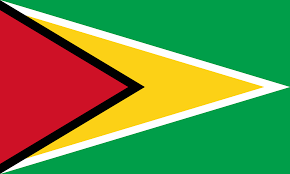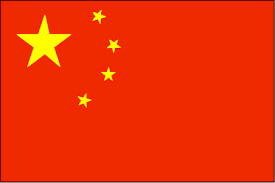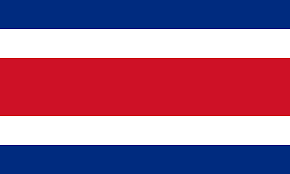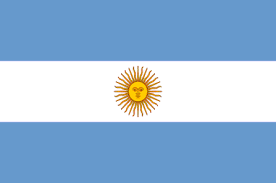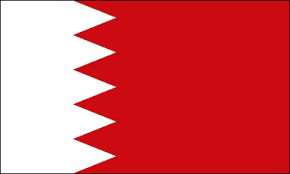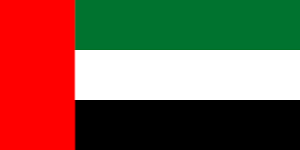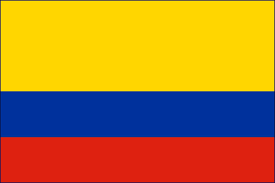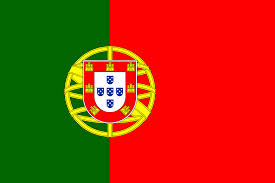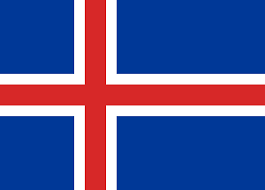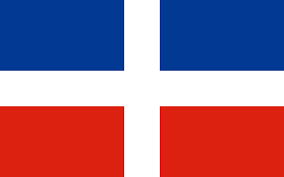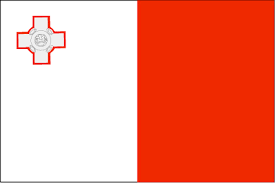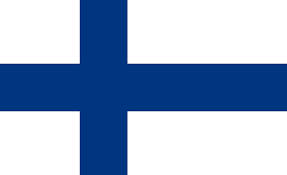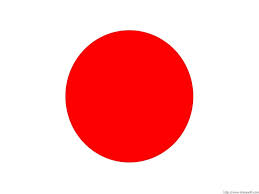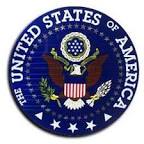Chile
.
.
Trackchasing Country #39
.
.
GREETINGS FROM PLACES ON THE WAY TO
TEMUCO, CHILE
From the World’s #1 Trackchaser
.
.
Today’s undertaking was just one of more than 2,000 trips that have taken me up, down and around the long and dusty trackchasing trail. If you would like to see where I’ve been and experience those adventures here’s the link:
If you’ve got a question, comment or whatever please leave it at the bottom of this report. It’s very easy to do. I’ll try my best to respond. Thanks!
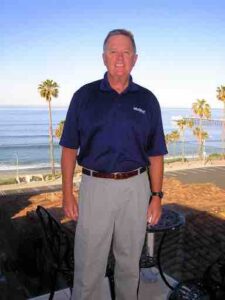
With dress pants and a collared shirt, I’m ready to meet and exceed the dress code for my sponsoring airlines.
.
I am an international trackchaser. My trackchasing hobby has taken me to well over 70 countries. With all of that travel I have seen and done just about everything….but not EVERYTHING. That’s why I’ll keep traveling for as long as I can. There is always one more thing to see and one more thing to do.
I hope you enjoy coming along with me to Chile, my 39th trackchasing country. I made this trip solo back in April 2010. The language barrier was difficult for me. Not much English is spoken in Chile. That didn’t help when I drove my rental car out of gas on a Chilean toll road either! You’ll hear about that adventure and many others in this Trackchaser Report.
“CHILE….THE PLAN” TRACKCHASING TOUR (part 1 of 3)
EDITOR’S NOTE
I have been on vacation from trackchasing during the past three weeks. The first of those weeks was spent golfing with my college fraternity brothers. Considering I graduated from college back in 1971, staying in touch with these guys for 40 years is quite an accomplishment. Considering we can still play golf is noteworthy as well. I was joined by Mssrs. Skonicki, Thompson and Hammer for some great time on the links. A special present from this trip was seeing Brother Jim Kozak for the first time in 40 years! Wow, that was fun.
Then Carol and I were off to Maui for nine days. It takes a break like this to get me revved up for the grueling trackchasing season. Friends and family may want to check out pix from this trip combined with a visit to see those loving and smart grandbabies. The link is at the bottom of this page. Now, it’s back to trackchasing on a full-time basis.
READER FEEDBACK
My Trackchaser Reports go out to more than 1,000 people after each new track I visit. On rare occasions, I will send out a Trackchaser Report notification to the Procter & Gamble retiree email conference. That group has more than 2,000 members. I will also notify the Trip Advisor travel forums of my visits to one foreign country or another. Following my trip to Japan (trackchasing country #38), I sent my reports to each of these groups. I received several complimentary comments. I always appreciate anyone who takes the time out of their busy schedule to comment on what they’ve read. I thought you might like to see some of these comments.
From Trip Advisor
You are my hero and I am insanely jealous. I’m going to be checking out your website in detail. I’ve probably been to 50 tracks (if you include sprint cars, etc.) but nothing like what you’ve done. Whew!
Indeed! I don´t have any contribution to this topic, just wanted to amaze about your life Randy. What an accomplishment :) Trying to break 2000?
Thank you for your excellent photos and descriptions. I am heading there in about a week on my first trip. I haven’t had much time to organize things, so your efforts have helped me greatly. I think I shall even be able to use the trains now that I have seen your photos!
Thanks again!
I read your entire trip account and it’s so helpful! I’m currently planning our trip to Japan in October to watch the F1 Grand Prix. We have both never been to Japan so research has to start now. I haven’t found directions to the Suzuka Circuit on the web that is as detailed as yours. Thanks so much for sharing!
I told my boyfriend about you and how many circuits you have been too. You are our hero. :-)
From Procter & Gamble
Well Randy, you have unintentionally made me realize what “stick in the mud” creatures my husband and I are!!! I have family and friends who travel but even they are SITMs compared to you! Thank you for sharing your story. I’m a homebody by nature but you’re making me ashamed of that. I’ve got to get moving!!
Utterly amazing and entertaining recount of something I have never heard of. The picture albums in Japan were entertaining and informative. I would like to know if you had a way to annotate each picture when you took it, or would you say your recall is so good that you could write the captions for all of those photos after you returned and processed the pictures? How did you do that?
Great! Thanks for sharing.
Just wanted to tell you that I LOVED your pictures. It brought back many memories of when my wife and I lived in Japan in the early 70s while I was in the Navy. However, it looks like the technology and facilities have changed immensely since we lived there. I don’t think they had capsule hotels back then although I remember reading about them in a science fiction novel called “Neuromancer” by William Gibson which I think was written around 1984. Any way most of your street scenes looked very familiar as did some of the ticket machines for the trains.
Anyway, the real reason I’m writing you is that I’m somewhat of an amateur photographer and I was wondering what camera you used for most of those shots? The colors are so vibrant in your photos. Did you shoot them in raw format? Did you photoshop any of them or are they straight from the camera? I noticed a picture of you charging an iPhone on the plane, but I’ve never been able to get that kind of picture from my iPhone so I’m guessing you used something else.
Randy: Great pictures! Thanks for sharing. The pictures are so sharp and clear. What kind of camera do you use?
GREETINGS FROM SAN CLEMENTE, CALIFORNIA
Editor’s note:
Everything written in this Trackchaser Report was reported before I ever landed in Chile. In order for a trip like this to be successful a good deal of work must be done in advance. That planning takes place at the world headquarters of RLR – Randy Lewis Racing in San Clemente, California.
Also, please don’t miss some “background” information on Chile, the country. It appears at the bottom of this report. I have tried to condense this section so you can get a good “feel” for this special place.
TODAY’S HEADLINES
Would a volcanic cloud in Iceland or an earthquake in Chile derail this trip?.…………..details in “Chile – The Earthquake”.
Who is “Gonzalo” and how does he know Garth?……………….more in “Navigation”.
Colombian Ricardo Soler came to my rescue for this trip …………..details in “The Race”.
ADVANCE PREPARATION
You might be surprised at the amount of “Advance Preparation” that goes into one of these trips. Several “items” need to be checked off. First and most important to getting the trip started was to confirm there would be a race. Once that’s done there’s the transportation, hotel, rental car and …….of course, the “companion selection” process. There are lots of other things that need to be covered too. When this was finished it would be time to “get out of the house and head on down the road”.
Editor’s note: You might wonder why I take the time to provide so many details about the logistical and economic portion of the trip. It’s simple. I hope that when people read one of my reports they can see themselves making an adventure like this. I’ll explain how I organize things as well as what it takes money-wise to make it happen. Then maybe that “spark” will come to a reader…..and before they know it they will be touching down in a Malta or an Iceland (maybe just to see a volcanic cloud!) or an Australia or somewhere far from their home…..and somewhere far from their comfort zone.
CHILE – THE EARTHQUAKE
As most of you know, Chile experienced a humungous earthquake back on February 27, 2009. That was just six weeks ago. The quake measured 8.8 on the “moment magnitude scale” which replaced the Richter magnitude scale back in 1970. The earthquake triggered a tsunami which devastated several South Central towns in Chile. This earthquake was centered over a large area that covered almost exactly the route (some 400 miles) I planned to take from Santiago to Temuco, Chile.
The earthquake was centered just 71 miles north of Chile’s second largest city, Concepcion. Precise GPS measurement indicated the telluric movement moved the entire city of Concepcion ten feet to the West! My planned drive to the race would take me through several small towns where 80% of the population was made homeless by this earthquake. I studied several Chilean email forums and learned that the damage, although severe, was not as bad as much of the press had made it out to be. It was with this background that I continued to plan my journey to Chile.
To compound the Chilean earthquake problem, Iceland had a volcano erupt creating a huge debris cloud this week. This ash from this volcano threatened to cancel flights all over Europe with a potential trickle down affect for flights to South America. I was dodging obstacles from every direction.
THE RACE
Confirming that this race was going to happen was more difficult than usual. My initial attempts to contact the Chile TC2000 racing club went unanswered. I attributed some of this lack of communication to the recent earthquake. It might have been my Spanish too! Nevertheless, the group’s website was updated frequently and told me they would be racing on Sunday, April 18.
When I first began thinking about this race trip (pre-earthquake), the race location was planned to be San Antonio, Chile. San Antonio is just 60 miles from Santiago, the only point in Chile my airline sponsors would take me. During the planning process, the race location changed from San Antonio to Temuco, Chile. Temuco was some 400 miles south of Santiago! I welcomed the change. This would allow me to see more of the country.
I still had not been able to get anyone from the TC2000 racing group to confirm to me personally that they would be racing. I don’t like to travel as far as Chile would take me without some personal confirmation of the race. Websites are fine for the “initial” planning, but I like to have “personal confirmation” before getting on the airplane.
No one from Chile was responding. What could I do? It was simple. I enlisted the help of the many “international friends” I have made during my travels to 37 foreign countries. Mr. Ricardo Soler, President of the TC2000 racing body in Colombia came to my rescue. Ricardo sent out a couple of emails in Spanish to the key players in Chile. Soon I was being contacted! Ricardo…..you are the man!!!
THE TRANSPORTATION
Although I have not seen racing in the most countries, (yet anyway) I have easily traveled more miles than any other trackchaser in search of international trackchasing venues by a factor or more than two. I don’t mind the travel a bit. It’s part of the adventure.
This trip would having me flying standby from Los Angeles to Las Vegas and then to Atlanta and finally to Santiago, Chile. Would you like the uncertainty of finding an open seat on a series of flights that would cover more than 7,000 miles one-way? Nope? I don’t mind it a bit. I actually enjoy the challenge.
TIME ZONES/DISTANCE
I will be traveling in central and southern Chile. This will be a long trip. I will end up traveling more than 14,000 miles to see this race. Last year I established my all-time trackchasing travel record at 263,789 miles. Will I be able to set a new mileage record this year? I doubt it.
Including my trip to Chile this year, I have “only” traveled about 70,000 miles in the past three and one-half months. Of course that is 5-10 times more than any other trackchaser has traveled during this time period. However, for me it isn’t much. This mileage includes separate trips to Malta, Canada, Finland, Japan and now Chile as well as five American states. How am I doing in the “miles traveled” department compared to the same period in 2009? Not that well. Through April 20, 2009 I had traveled some 105,000 miles!
Despite Chile being so far away from both California as well as the U.S., most of the country is in the Eastern time zone. It turns out I’m going much further south than I am east.
CURRENCY
I always use my “official” banker, that would be Carol, to supply me with the local currency of whatever country I will be visiting. Chile uses the Chilean “Peso”. Currently, one U.S. dollar will buy about 516 of these pesos. However, our bank doesn’t trade in this currency. I would have to get my own Chilean pesos once I arrived into the country.
WEATHER
Because Chile is located below the equator, its seasons are “reversed” compared to the U.S. While many of you are eagerly anticipating spring, it is fall in Chile. Chile is almost as long (2,700 miles) as the United States is wide. Because of its relationship to the equator that means the most northern part of Chile is warmer that the most southern part of the country. I would be landing in Santiago with temps in the lower 70s and not much rain forecast. However, my destination of Temuco 400 miles to the south of Santiago would have temperatures in the upper 50s with a 50% chance of rain. Luckily, this group races in the rain, so being rained out would not be a concern.
OVERNIGHT ACCOMMODATIONS
My trip called for being gone six days and five nights. Due to the flight schedules I would spend two of those five nights on an airplane. At least that would save on the hotel bill!! I figured I would “wing it” on my first and third nights on the ground in Chile. My second night in Chile would be at the somewhat “bland” Holiday Inn Express of Temuco. That location was recommended to me by the TC2000 Chilean racing group. I was even given a “special contact” person to help me when I arrived at the hotel.
THE RENTAL CAR
My itinerary called for more than 800 miles of driving. I actually liked that idea. What better way to see the country. I planned to take as many side trips as time would allow. As always I would be driving a manual (stick) shift car during this foreign trip. I really enjoy a stick shift car on these trips.
NAVIGATION
“Garth” my faithful GPS buddy will be taking a break on this trip. He doesn’t have South American maps. I almost pulled off a special programming coup with Garth only to be stymied at the last moment.
Therefore, I will be going with his Garth’s Chilean GPS friend, “Gonzalo”. Gonzalo will cost me $16 per day U.S., but the support of a GPS system is so valuable when visiting a foreign country, or any country for that matter, that I will gladly pay the piper. I certainly don’t want to spend much time being lost when I have more than 800 miles to cover during my short stay in Chile.
THE TRAVELING COMPANION
It’s always fun to have a “traveling companion” on trips like this. However, I guess I’m the only person I know who is comfortable going “on vacation” every day of the year. Most people have jobs, or if they’re retired, chores to do at home. I have neither. I only have “free time”. Please don’t feel badly for me. It took me more than 30 years of working for “the man” to get in this position.
As noted Carol and I have just returned from nine days in Hawaii. I would be leaving for Chile less than 72 hours after our return from the Pineapple state. As it turns out Carol has a “grandbaby babysitting gig” for this weekend. Even if she didn’t have this conflict it would have taken my best persuasion skills to convince her to come on this trip. This is especially true given the extensive international travel coming up on her calendar.
Over the next five days, I will sleep on an airplane for two nights. This is not the “good” kind of travel plan that I like to reserve for “Trackchasing’s First Mother”. She’s a good sport with this….but I don’t want to kill the “goose that laid the golden egg”….or something like that.
THE SUMMARY
I have enjoyed every single visit to the 37 foreign countries where I have trackchased. I have also enjoyed traveling to the 15-20 other countries that Carol and I have visited without doing any trackchasing. For some reason, I am especially looking forward to this trip. I can’t wait to tell you more (with pictures of course) in Parts 2 and 3 of this Chilean adventure. It will be the most fun. Remember, that’s the overriding objective of EVERY trip….to have fun.
In preparation for my departure, I set my alarm clock for 3:23 a.m. on Thursday morning. For some reason I was worried that I might miss my wake-up call. Therefore, I asked Carol is she would wake up at 2 a.m., keep “an eye on the clock” until 3:23 a.m., and then wake me up. This “suggestion” was not met positively as one might expect.
Therefore, I slept with one eye open until I couldn’t take it anymore. I arose at 3:10 a.m., showered and dressed. With a passionate (my words) good-bye to “Trackchasing’s First Mother” I headed out on the trackchasing trail. I was in search of trackchasing country #39.
To be continued………………….
Thanks for reading about my trackchasing,
Randy Lewis
Alberta’s #1 Trackchaser
Chilean saying: Socialism can only arrive by bicycle.
“CHILE…….I’VE ARRIVED” TRACKCHASING TOUR (part 2 of 3)
GREETINGS FROM SANTIAGO, CHILE
TODAY’S HEADLINES
Any guesses on how many trackchasers have ever trackchased in Chile?…………..details in “The Objective”.
I would encounter three major obstacles before I could get to Chile……………..more in “The Trip – Day 1 – Thursday”.
Rodrigo Concha and a game of international intrigue……………….more in “The Trip – Day 3 – Saturday”.
THE OBJECTIVE, THE TRIP, THE PEOPLE…AND A WHOLE LOT MORE
The Objective
Why do all of this?
I was reasonably well rested from our vacation to Hawaii. However, it did not take long to get back into the “trackchasing grind” upon my return from the islands. Santiago, Chile would be a long way from my home in southern California.
Why go all the way to Chile to see an auto race? I guess as good of a reason as any is that no trackchaser has ever seen a race in Chile. It’s not often that a trackchaser is the very first to see racing in an entire country.
The Trip
Day 1 – Thursday
Was I really the Dale Earnhardt Jr. equivalent back in the day?
Yes, I have a good deal of support from my airline sponsors. At this stage in my trackchasing career this is extremely important. Back in the day, I garnered some airline sponsorship as well. I grew up in Illinois. I took my first trip to California at age 23. This was long before frequent flyer programs. Nevertheless, I got to fly out west for free. I guess I was the “Dale Earnhardt Jr.” of my time. What’s the connection? Dale is sponsored by the U.S. National Guard. I was sponsored by the Marine Corps. They were more than willing to fly me to California, give me a free haircut and a fresh set of “skivvies”. Of course, this was all in the name of “sponsorship”.
No WeightWatchers back then.
Yes, I’m talking about Marine Corps boot camp. I wouldn’t need any WeightWatchers program after a few weeks of 24/7 physical training (PT). There was one simple objective in boot camp….….to get through the day. We had to be fully dressed and standing in formation out on the “platoon road” at 5 a.m. We would then be in bed at 9 p.m. every night fully exhausted. Between 5 a.m. and 9 p.m., they kept us “busy”. When we weren’t trying out a special chokehold (this was good training for dealing with those “Dreaded East Coast Trackchasers”) on one of our fellow privates the drill instructors were beating us. Yes, it was a great way to spend my first winter in SoCal.
Just getting through the day was the plan today as well. This was day 1 of my six-day trip to Chile. There were three major obstacles that would make this a very trying day. No, I didn’t have any Marine Corps drill instructors beating me with black leather gloves. No, I didn’t have to lift an M-16 rifle over my head until it felt as heavy as a Volkswagen. Nevertheless, it would be a tough day.
Obstacles, obstacles, obstacles.
These three obstacles stood in the way of my getting to Chile on time and in style. They were:
- Volcanic eruption in Iceland
- Planes that were way too full for me to get a seat
- A non-working plumbing system on a nine-hour international flight
Why would something in Iceland be a concern in Chile?
You’ve all seen and read about the Iceland volcanic eruption. It spewed dust and debris into the air cancelling flights all over Europe. I was lucky I wasn’t trackchasing in that direction this week. I kept checking to see if Chile was in the path of this “debris flow”. It wasn’t.
Trackchasing ‘strategy’ at its finest.
My preferred flying route would have taken me from Los Angeles to Atlanta and then onto Santiago, Chile. However, the flights were too full to risk flying from Los Angeles to Atlanta on a non-stop flight. I had to come up with another itinerary. If I didn’t “make” one of those flights, the entire trip would be toast.
I have a good deal of experience in this area. I also have all the technology tools to get the job done when it’s time to come up with an alternative flight plan…..fast. After much research, I had narrowed my “first stop” to be Las Vegas or Denver. From either one of these cities I would have 4-5 shots at getting to Atlanta.
I decided on flying from Los Angeles to Las Vegas. The flight was “wide open” with almost 100 seats available. However, it left LAX at 6 a.m. That meant I would be getting up at 3:10 a.m. and arriving at the airport before 5 a.m. Yes, this trackchasing can be a tough business. At least the Marines let me sleep until five in the morning!
No casinos for me.
Soon I was in “Vegas”. It seems like I’m always in Las Vegas. However today there would be no Garth Brooks. Actually, I would never even leave the airport bound for any of the casinos. There were five flights going from Las Vegas to Atlanta that would get me into the Peach state in time to catch my flight to Santiago. I needed to be on one of them.
I had been monitoring these five flights for the past two weeks. Don’t worry; it’s what I do. Once I was in the Las Vegas airport, I continued to check the “load factors” via my laptop. The Las Vegas airport offers free “Wi-Fi” service. They are in a minority in doing this. I wish every airport offered free laptop Wi-Fi, although I have full internet connections via my iPhone at all times.
There’s always room for one more…isn’t there?
I didn’t expect to make the first flight to Atlanta….and I didn’t. My “seniority” date is the same as J.J.s. Normally I am at the bottom of the priority list. Sometimes I “beat out” a newbie or two, but not by much. I missed getting on that first flight by one seat! I was encouraged. I didn’t expect it to be that close.
Then on the second flight I missed again by one seat. I had expected to get on this one. When I miss a flight I have no special priority on the next flight. My seniority date goes “back into the pile” and I can instantly be at the bottom of another 20-30 person list on the next flight.
The third flight wasn’t even close. I missed it by nine seats. I was getting minorly concerned at this point. If I didn’t make it to Atlanta in time for the Santiago flight I would miss an entire day in Chile. Heck, I might even end up missing the entire trip. I began to check other connecting points between Las Vegas and Atlanta. Nothing looked good. I would sink or swim with the Las Vegas-Atlanta route.
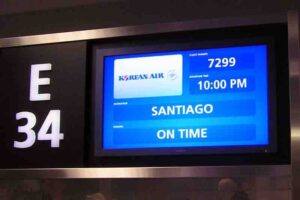
I was headed to trackchasing country #39. The flight from Atlanta to Las Vegas would cover nearly 5,000 miles and take about ten hours.
I made it!
Finally, on the fourth of five flight options I made it. However, I would be getting on the plane so late that there was no more room for luggage in the overhead bins. I would have to check my carryon bag at the door of the plane. They asked me where I wanted to check the bag too. I had two choices, Atlanta or Santiago.
If I chose Atlanta, I would have to leave airport security to get my bag in baggage claim when I landed there. If I chose Santiago my bag might go there even if I didn’t. I chose Atlanta. In the meantime, I pulled out my “Zero brand” golf windbreaker. Then I stuffed the windbreaker with as many pairs of underwear, t-shirts and socks as I could. No, the trackchasing business is not always pretty. If I never saw my checked bag again I could now survive this trip.
I had enough time once I landed in Atlanta to retrieve my bag. My plane didn’t leave for Santiago until 10 p.m. Once I picked up my bag, I had to clear security again. This was beginning to be a long day. I had arisen at nearly 3 a.m. I had been in airports for some 15 hours…..and I hadn’t even taken the long 9-hour flight to Santiago yet.
You’re going to have to ‘hold it’.
I showed up in Terminal E (the international terminal) at the Atlanta airport. I gave Carol one last phone call to update here on my progress. Just as I hung up from my conversation with her, the P.A. announcement told me there was a problem with the plumbing system on the flight going to Santiago. The toilets wouldn’t be working. It was a nine-hour flight. Oh my!
I guess with all of the flight cancellations to Europe because of the “Iceland ash” problem they had some extra planes sitting around. Soon they found another, with a working toilet, that would take us to Chile. For most of my recent international trips, I’ve had the luxury of flying in either first or business class. On these long flights, that’s a real plus. Tonight the best I could do was to get a seat in coach. That was O.K. by me. I had successfully made three different flights on a standby basis. I was going to Chile. I was going to be the first trackchaser ever to see a race in this South American country. That was good enough for me!
Day 2 – Friday
Today was arrival day!
Yes, today, Friday was arrival day. Race day is not until Sunday. I could have come in a day later. There were two reasons I didn’t. First, if I had attempted to come in on Saturday and had some kind of travel problem I would have missed the race. More importantly in the big picture was that coming in a day early gave me more time to explore Chile.
As it was, I landed at the Arturo Merino Benitez International Airport in Santiago, Chile at 7:50 a.m. The flight took nine hours from Atlanta. The pilot told us he’s flown this route many times over the years. He said he had never had a flight this bumpy for almost the entire flight. It was bumpy!
It wasn’t that comfortable flying in coach. I was on the “two seat side” with no one next to me. There wasn’t much legroom. With just two seats, there wasn’t enough room to lie down. I’m not sure how much sleep I got but it didn’t seem like much.
Was I getting a visa or getting ripped or both?
When we landed, my first order of activity was to get a visa so that I could enter Chile. I knew I had to get a visa I just didn’t know how much it would cost. When the tally came to $131 U.S. for my short four days in Chile, I was surprised. They call it a “reciprocity” fee. I call it something else. I guess the U.S. charges Chileans the same amount to enter the U.S. At least I didn’t have to go to a foreign country’s embassy in the United States to get a visa in advance of my travel……like I did last week (Oops! I didn’t mean to let that slip out.)
After I had my visa, clearing customs was easy. They didn’t even ask me any questions. A few months ago, I sent my U.S. passport away to get 24 more pages added giving me a total of 72 pages. Today, I only have about 10 pages that haven’t been stamped! There are four or more stamps per page. I guess I’ll have to get some more pages added soon.
The Ace Rental Car Company comes to the rescue.
Once I was clear of airport security, it was time to get my rental car. I rented from the Ace Rental Car Company. However, in Chile they use the brand name “Econorent”. I would be renting the car for four days at $25 per day U.S. That seemed like a fair price.
However, there was a $15 per day “mandatory insurance” fee. Then there was a 6% “airport” fee, a 19% “IVA” fee and a $9.00 per day “freeway use” fee! It all added up to $236 U.S. for the four-day rental.
Garth gives way to Gonzalo.
I would also be renting a Garmin GPS unit for $16 per day. I could have purchased Chilean maps for my own GPS for about $150. However, I may never come back to Chile. Renting a GPS seemed more economical. In hindsight, I guess I could have sold the Chilean GPS maps on EBay after I used them for about the same price I would have paid for them new.
Having a GPS on one of these trips is a Godsend. I’ve done it both ways, many times, so I should know. I’ll tell you as I go along how I benefited from having the GPS guide me.
I love my foreign rental cars.
My rental car was a nearly new Toyota Yaris. From the outside, it looked small like most foreign cars I rent. However, on the inside there was plenty of room for everything. The car has a five-speed manual transmission and moves on down the road just fine.
I needed to get two things done today.
I had two primary objectives for today. The first was to cover more than half of the 400 miles needed to get me to the racetrack’s location in Temuco, Chile. Secondly, I wanted to see if I could get a good look at the earthquake damage from the late February Chilean shaker. I succeeded with one of these objectives and failed on the other.
Most of my drive from Santiago, located in central Chile to the Temuco area located some 400 miles south was along the Route (Ruta) 5 toll road. I suspect I paid about $20 U.S. in tolls just today. That was more than I expected. I’m not sure I saw as much of Chile as I would have liked but I made good time!
If one is to sleep well and if one is to love well then one must dine well.
When I travel, be it at home or internationally, I enjoy having quality unique meals. I will do whatever I can to avoid eating in chain restaurants. I’m not a big fan of chain restaurants back home either (except Subway). Chain restaurants would not be an issue in Chile. The toll road was what we might call a “controlled access” highway at home. It was not unusual to see people walking or bicycling along the roadway just inches from the speeding vehicles. There was a good deal of truck traffic today as well. As usual, I took as many unique pictures of the sights and sounds of the country as I could. Don’t miss them.
Yo no habla English.
The locals don’t speak much English. Almost none in fact. When I stopped for lunch in a roadside restaurant that became obvious. There was no menu in English and the server didn’t speak more than a few words of my language either.
A restaurant I enjoy occasionally in SoCal is the El Pollo Loco (the crazy chicken). Therefore, I know “Pollo” means chicken. I ended up with a generous slice of chicken breast as well as some “papas fritas” or French fries. Both were first rate.
However, the highlight of the meal was the complimentary appetizer. This came in the form of a bread that looked like a Bob Evans biscuit but tasted like a bagel. This was served with a sweet chili salsa that was absolutely addictive. I ate all the biscuits they gave me as well as an extra dish of salsa!
Cash is king.
The restaurant didn’t take credit cards. I think that may be a common theme in this somewhat rural country. Luckily, I found an ATM at the airport and withdrew $200 U.S. (I think) in Chilean pesos. I’m not sure what the fee was or the conversion rate. Why quibble over pennies, right.
No earthquake damage?
Chile’s second largest city named “Concepcion” was very near the big earthquake that hit Chile during the last couple of days of February. That would be in 2010, Colin! One report I read said that 80% of the people in nearby small towns were rendered homeless after the quake. An eight-foot title wave hit a small village about 20 miles north of Concepcion. The damage report seemed strange. I drove around Concepcion for about 30 minutes and the worse thing I saw were a few piles of broken bricks stacked here and there. Either they really cleaned up the earthquake damage quickly (I doubt that) or the press might have exaggerated the damage (seemingly more likely).
“Gonzalo”, my friendly GPS aid, did a good job of directing me along this route. However, Gonzalo is not quite as good as “Garth” my faithful GPS servant born and raised in the U.S.A. There was one road on the route that Gonzalo didn’t seem to recognize. He kept telling me to “recalculate”. Finally, I did what Archie Bunker would do with Edith. I hit the mute button. The fall colors were beautiful on my drive through Chile today.
It gets dark in Chile at about 6:30 p.m. As mentioned, it’s the fall season here now. It was dark and I was still driving. I had driven some 350 miles after “sleeping” in an airplane seat overnight. I did take two “12-minute power” naps during the day. There are plenty of gas stations than provide “mini rest areas” that are safe. I never felt unsafe at any point during my trip to Chile. These locations offer “easy on/easy off” access for these brief respites.
It was time to bring this day to a close.
It was time to begin looking for a hotel. We Americans are so lucky. When we travel in the U.S.A. there are so many choices and the signage makes most businesses easy to find. It’s not that easy deciphering things when I travel internationally.
I’m sure part of the problem is the language barrier. However, folks outside the U.S. just don’t seem to be as “commercially minded” as the capitalists residing in America. Maybe if they were they would enjoy a more upscale lifestyle.
However, Gonzalo was on top of his game. He recommended the “La Turbina” hotel in a place called “Los Angeles”. The coincidence was too much to pass up. There weren’t any hotels in the area where I had been driving. I NEVER would have found this place on my own. Score one for Gonzalo!
Although it was dark when I arrived, the hotel looked like one of those older one level affairs that might be found in Santa Barbara or Palm Springs. It was classy but older. A single room was available for just 29,000 Chilean pesos. I’ll let the curious among you figure out how much that was in U.S. dollars and cents.
A good wine, a good meal and it was off to bed.
It wasn’t quite 8 p.m. yet. I had not had dinner yet. Luckily, the La Turbina hotel had a lovely restaurant. It wasn’t very crowded. The service was fast and friendly. I had a perky white wine with two delicious pork chops and a side of spaghetti. Again, it was the biscuits and olive oil that added a sparkle to the meal.
Sleeping in an airplane and driving 350 miles in a strange place made me long for some shuteye. I was only about 100 miles from the racetrack. The race isn’t until Sunday. This would give me all day tomorrow (Saturday) to explore. I hoped to make the most of it.
Day 3 – Saturday
It’s autumn in Chile and the ‘fall colors’ are beautiful.
Today I had a full day of touring in Chile. This is why I came in a day early. I was only 100 miles from the racetrack’s location. I didn’t have anything special planned. I would wander around to see what I could see.
Since it’s autumn in Chile now, the “fall colors” are in full bloom. That means green for the leaves that haven’t yet turned and a beautiful yellow/gold for the ones that have. It’s beautiful.
Two of the main agricultural crops are grapes and apples. When Ricardo Soler of Colombia got me “hooked up” with the locals he reminded me the “coffee” country was helping me get to the “wine” country. The vineyards dominated from Santiago down a long way. Then the apple orchards took over.
What three items surprised me along the Chilean toll road?
The toll road didn’t have much traffic. However, much of the traffic that was on the road was trucks. I suspect that with fuel prices at about $6.50 per gallon locals don’t drive long distances. There were three surprising things about the toll road.
First, I paid a lot of tolls. Most tolls were $1,900 pesos. That’s about four bucks U.S. I estimate that I paid nearly $100 U.S. in tolls during the entire trip. Another unusual thing was the road side memorials to what I can only guess were folks who had lost their lives at the spot of the memorial.
I’ve seen these frequently in the U.S. However, the quantity and enormity of the roadside memorials in Chile was something. Some were huge. One I saw even had seating for four! As I was coming down one mountainside road in the dark, one of these memorials scared me! It must have been 20 feet high and 30 feet wide. It was all lit up with candles and lights. Wow! It made me drive just a wee bit more carefully.
I don’t know if the memorials were for drivers or pedestrians. The pedestrian traffic along the road’s shoulder was heavy. I saw small children (estimated ages 5-10) walking along the side of the road less than five feet from traffic moving at highway speeds. That can’t be good in the long run. I sometimes wondered how far these people were walking since there often didn’t seem a destination in clear sight.
Gas stations were located along the toll road in sort of a U.K. “Welcome Break” style. They typically offered “banos” (bathrooms) for “hombres” (like me) as well as a restaurant of sorts and the filling station. Most were all very modern. Gas station attendants filled the tank and washed the windows. What a concept! The stations also accepted credit cards.

I had seen this small grandstand from the road. I was expecting a rodeo of sorts. Rodeo is Chile’s national sport.
Was this a Chilean county fair figure 8 race?
As I was driving along on one of the two-lane roads, I saw a commotion that required me to stop. I could see a small grandstand in the distance. Maybe this was a county fair figure 8 race. Nope. Then I thought it might be a rodeo, which is the national sport of Chile. It wasn’t that either but I was getting close. After I turned in and parked I found out this was a livestock auction going on. They were bidding on both cows and horses. There weren’t any other people wearing a UCLA sweatshirt and shorts on a cloudy and coolish day. I tried to fit in but that wasn’t possible amongst these cowboys and ranchers. Nevertheless, I did get one very special photo. Please don’t miss it in the “Chile – Part 2” section.
Saltos del Laja!
From there I followed a tour guide recommendation from a pamphlet I had picked up in the La Turbina hotel lobby. I was off to see the Saltos del Laja waterfalls. This was a large and beautiful waterfall. Again, the pictures will give you a great idea of what I saw. This was well worth the stop.
Trackchaser kidnapped in Paraguay?
As I was leaving the waterfall, I came across a sign that read “Paraguay – 12”. Was I only 12 kilometers from Paraguay? I had no idea, but figured if I was that close I should at least say I set foot in another country. This drive was interesting. Soon the worn and potholed pavement turned into an unpaved road. I could see myself being kidnapped by the Paraguayan “Hunta” and appearing on a 60 Minutes TV segment. I would be portrayed as an innocent trackchaser who gone one step in the wrong direction causing an international incident…..or something like that. I’ll have to wait to get home to see if I was in the “real” Paraguay or just some little town in Chile of the same name. Since I don’t travel with any maps on these trips I really didn’t know for sure.
Was this Indiana or Chile?
By now, I had spent a good deal of the day, just wandering around Chile. The scenery was wonderful. It was time to find my hotel in Temuco, Chile sight of tomorrow’s race. I would be staying at the Holiday Inn Express. I am somewhat embarrassed to admit that.
You see, if I were on my own, I wouldn’t be “caught dead” staying in a Holiday Inn Express in a foreign country. Of course, at this stage in life I don’t want to be “caught dead” anywhere. The point is I don’t travel internationally to repeat experiences I can get every day at home. It the same reason I feel badly for Americans who travel abroad and then eat at McDonalds. The only caveat to that is when “fast food research” is being conducted. I consider this acceptable when a new never before seen in the U.S. McDonalds item is being offered!
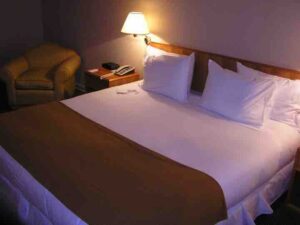
This is my room at the Holiday Inn Express in Temuco, Chile. This hotel was headquarters for the Chiean race teams.
Nevertheless, the Chilean TC2000 racing group was staying at the Holiday Inn Express. They recommended I stay there too. The hotel was brand new and beautiful. My room was perfect with a king-sized bed, two phones and everything I needed. It’s just that I sort of felt like I was in Ft. Wayne, Indiana which is not a feeling you want when you’re in Temuco, Chile.
Gonzalo needs more training.
It was still daylight. I thought it might be a good idea to see if I could find the racetrack. The bottom line was that I couldn’t. Gonzalo just didn’t have the detailed side road mapping needed to get the job done. I had scoped things out on Google Maps before I left for this trip. However, I didn’t write anything down because I thought my GPS would get me there. No problem. I would simply ask my TC2000 contact how to get to the racetrack for tomorrow’s race when I returned to the hotel.
I ate well in Chile.
It was time for dinner. I really ate well in Chile. I am the adventuresome sort when it comes to international dining. I like to try the country’s local favorites in above average atmospheres. At the same time, I’m not averse to stopping at a temporary roadside shack for a meal. Tonight I picked the PuraCarne restaurant. According to their sign they have locations in both Santiago and Temuco.
You’re going to have to take my word for it, but there isn’t much English spoken in Chile. All of the signage is in Spanish. There are no English subtitles! This is true for restaurant menus most of the time as well. No problem. I know enough Spanish to keep from starving.
Chilean breads….the best.
Once the servers know you don’t speak their language but at least are trying your best, they’re on your side. If only my high school Spanish teacher had felt the same way! I came to fall in love with the breads served before my meals in Chile. Tonight there was a special dinner roll (I didn’t get the name in Spanish) that tasted almost like a fried donut. Every table I dined at during this trip offered olive oil and vinegar. I had “seconds” on the bread tonight.
This part of the world is noted for steak. Tonight I had a filet mignon that would rival anything I’ve had at Ruth’s Chris Steakhouse…and at about 1/3 of the price. The 300- gram “filete parrillero” was a huge hunk of meat. My metric converter say that’s only 10.5 oz. but it looked about twice that size. It was cooked to perfection. Also the “Papa Fritas” (French fries) were some of the best I’ve ever had. Everywhere I went the Papa Fritas were top quality, lightly fried, golden and fresh. Although I was absolutely stuffed, this was a “restaurant research” mission of sorts. That meant dessert.
In the name of ‘restaurant research’.
I was intrigued by the “Panqueque Alaska”. I had to try it. Although I would end up waddling out of this Chilean steakhouse, I was glad I had dessert. The pancake was a crepe. It was folded “burrito style” and stuffed with vanilla ice cream. My server poured a liquor over the entire concoction and then “set it afire”! I blew out the flame as if it were my birthday and went to town. It was the best.
Now I joined in a game of ‘international intrigue’.
The steakhouse was less than a mile from the hotel. When I returned to the HIE I was looking for “Rodrigo Concha”. Through secret emails with the TC2000 Chilean race officials Rodrigo had been identified as my “contact”. Yes, this all sounded like a South American spy thriller.
However, when I checked in “Rodrigo Concha” was not listed as a guest with a reservation. That didn’t see unusual. If you were a spy, would you use your own name? I noticed several men sitting around the pool in the cool of the evening having a drink. They looked to be from the racing group. I approached them and apologized for interrupting. I tried to explain my situation. However, they spoke Spanish and I didn’t. I handed them my trackchasing business card and asked them to give it to “Rodrigo Concha” if they saw him.
Should I be concerned?
Then I headed up to my room. There was a minor concern. I had tried to find the racetrack and couldn’t. I had tried to get in “contact with my contact” and couldn’t. I didn’t like where this was heading. Once I was back in my room I took off my clothes and began to relax. Just at that point, I received a call. It wasn’t Rodrigo but the front desk clerk. She asked me to come down to the front desk immediately.
This was beginning to seem like a game James Bond might play. Nevertheless, I got dressed and did as requested. When I arrived in the lobby a Chilean gentleman greeted me. He had heard that I was looking for Rodrigo Concha. “What’s the problem”, he asked. “What is your question?”. This fellow was very businesslike. He also sounded like he “had information”. He spoke English well and we were soon communicating.
I handed him my trackchasing business card. My card explains that I am the World’s #1 Ranked Trackchaser hailing out of San Clemente, California. I “mentioned” that I had seen racing in 38 different countries at 1,530 different racetracks. My contact and his buddy exchanged knowing glances and uttered something to each other in Spanish that translated in my eyes to “hey, this guy is somebody”. I didn’t have time to explain my valiant effort to compete on a level playing field with those “Dreaded East Coast Trackchasers”. That seemed like too much detail at this point.
The “man in the lobby” told me he would make contact with the well-insulated Rodrigo Concha. Rodrigo would then be in contact with me. With a couple of secretive glances to his buddy, he bade farewell and told me to wait for further contact.
The phone call.
Back I went to my room. It wasn’t long before the phone rang again. It was Rodrigo Concha! He spoke great English and told me how much the TC2000 racing group of Chile was looking forward to me coming to their race tomorrow. I tried to thank him for helping out. He wouldn’t hear of it. He told me it was the TC2000 racing group that was thanking me for coming all the way from the United States to see their racing.
Rodrigo went on to explain that I would be a special guest of the racing club. Admission and full access privileges would be provided. Rodrigo even offered to come by the hotel to pick me up. Since the HIE had full internet capabilities I had been re-exploring Google maps. The track was only 13 kilometers from the hotel. I wouldn’t have any trouble finding it. I told Rodrigo I would see him at the Autodromo Interlomas in the morning.
I went to bed with a smile on my face. My trip to Chile was going very well. I had seen a lot and would see much more over the next two days. The racing part of the trip was all locked up. Despite the uncertainties that accompany every trip I take, things had fallen in place almost perfectly as they usually do.
To be continued………………….
Thanks for reading about my trackchasing,
Randy Lewis
Alberta’s #1 Trackchaser
A child who does not play is not a child, but the man who doesn’t play has forever lost the child in him.
TRAVEL DETAILS
AIRPLANE
Los Angeles, CA (LAX) – Las Vegas, NV (LAS) – 236 miles
Las Vegas, NV (LAS) – Atlanta, GA (ATL) – 1,740 miles
Atlanta, GA (ATL) – Santiago, Chile (SCL) – 4,695 miles
RENTAL CAR
Comodoro Arturo Merino Benitez International Airport (Santiago, Chile) – trip begins
Official end of Randy Lewis Racing (RLR) Trackchaser Report
“TRYING TO DO SOMETHING JUST A LITTLE BIT DANGEROUS EVERYDAY” TRACKCHASING TOUR (part 3 of 3)
CHILE – PART 3
Editor’s note: I am happy to announce a dramatic improvement in the quality of the photos I offer for your viewing enjoyment. Effective with my last Japan report, a significant improvement in the color, saturation and overall sharpness of my photos is now in effect. Take a look and I am sure you will see the difference.
GREETINGS FROM TEMUCO, CHILE
TODAY’S HEADLINES
Foreign trackchasing is all about “access”..…………..details in “The Trip – Day 4 – Sunday”.
When the engine stops you’re out of gas………………..more in “The Trip – Day 4 – Sunday”.
Tsunamis….a very dangerous foe………………..more in “The Trip – Day 5 – Monday”.
THE OBJECTIVE, THE TRIP, THE PEOPLE…AND A WHOLE LOT MORE
The Objective
It was time to see some racing.
I continue my methodical “trudge” up the international trackchasing ladder. It won’t be long now. It is always a wonderful day when I can go trackchasing for the very first time in a country where I have never seen racing. Chile, one of only two countries in South America that doesn’t border Brazil would be #39.
The Trip
Day 4 – Sunday.
It’s race day!
Making contact with the organizers of international events in advance is extremely important. It’s critical to get the lowdown on when the race is happening and where. It’s one thing to travel to Nebraska to find out the track’s website wasn’t up to date with the latest cancellation. It’s another to travel 15,000 miles round-trip to Chile to figure out the race was last week and not this week!
It had taken some effort to get in touch with the TC2000 race officials from Chile. I tried sending messages to the contact info listed on their website multiple times to no avail. I tried other sources as well in both English and Spanish. It was then that I thought to enlist the aid of my trackchasing contacts in other South American countries. I have now trackchased in four countries on this continent. No other trackchaser has visited more than two.
Thanks.
I have Ricardo Soler, President of the TC2000 sanctioning body in Colombia to thank for getting me “in” with the Chilean officials. Maybe it was my poor Spanish but Ricardo’s note got action quickly. Ricardo, I owe you! Hopefully, I can pay you back sometime when you visit the U.S.A.
It’s all about access.
What’s the biggest benefit of having “contacts” in the foreign trackchasing world? Some might say “you get a free ticket”. Actually, a complimentary ticket is the least of it. The main benefit is “access”. Access lets you see and experience so many things the trackchaser relegated to the grandstand just doesn’t get to be a part of. Access is king!
I have a new friend in Chile.
Last night’s phone conversation with TC2000 Chilean racing official, Rodrigo Concha, confirming everything, sealed the deal. Rodrigo even volunteered to come to my hotel and lead me to the track! That wouldn’t be necessary. His verbal directions along with my review of Google Earth’s info was all I needed. Unfortunately, Gonzalo my foreign GPS buddy must not have been a race fan. He had never heard of the Autodromo Interlomas and couldn’t help me a bit.
After a quick breakfast at the brand new Holiday Inn Express, it was “off to the races”. The track was just 10 miles of so from the hotel. The track sits back from “Ruta” 5 about one mile. However, it cannot be seen from the highway. In addition, there are absolutely no signs directing fans to the track. If you plan to go there you’ll need a look at my photos from this trip. They’ll get you there.
A friendly staff is always helpful.
When I arrived the friendly security staff was most helpful. The young woman at the ticket booth made sure I had a paddock wristband and ticket (complimentary). The two young security guards marveled over my inability to speak Spanish. I don’t know why they were so surprised. It just comes natural too me. Nevertheless, they were more than gracious is allowing me to take their photos.
I had just entered the paddock area, when Rodrigo Concha spotted me. I thanked him for helping me at the track. He assured me that it was him and the TC2000 sanctioning group that should be thanking me for coming all the way from America to show interest in Chilean racing.
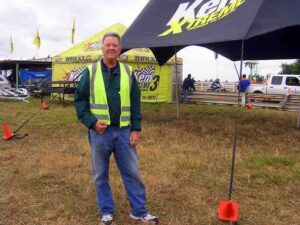
Rodrigo gave me this “journalist vest”. It would allow me to go anywhere on the property to explore and take pictures.
I was a member of the ‘mainstream media’ for the day.
Rodrigo told me I could go anywhere I wanted while at the track. He even provided a bright yellow “photographer’s vest” reserved for working racing journalists. He said, “I know you’ve done this before. Just be careful where you go and you can go anywhere to take your pictures”. He also went on to explain a little a bit about today’s racing program. Then he was off. Before he left he told me he had a surprise for me.
With that I was off to explore everything the TC2000 racing group and the Autodromo Interlomas had to offer. This is a 2-kilometer (about 1.2 miles) asphalt road course. It has some elevation changes. The best thing about it is that you can see nearly the entire course from any vantage point. From the V.I.P. tower I could see the entire course. That is my kind of circuit!
Rodrigo had mentioned that TC2000 races at three separate facilities during the year. They used to race at a track in Santiago but it was closed down by neighbors because of noise. TC2000 also races at San Antonio and La Serena. Rodrigo told me that today’s venue, the Autodromo Interlomas is the best racing track in all of Chile. He also went on to say there is no oval racing in the country. Lesser known groups race at Interlomas during the year as well. There are more road course facilities in Chile where TC2000 does not race. Rodrigo was not at all familiar with figure 8 racing.
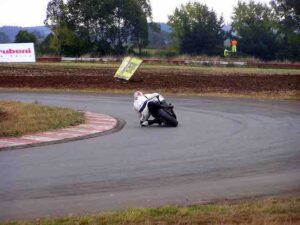
I arrived at the track early as I almost always do. I was in time for some practice laps by these daredevils.
The racing nitty gritty.
When I arrived, the competitors were finishing up with practice. There were four groups racing today. They had two sports car classes with 10-20 competitors in each. They also had formula 3 cars (similar looking to what you might see in the Indy 500) as well as motorcycle racing. I don’t get to see much motorcycle racing. I wish I could see more. They are fast and it’s an exciting race to watch.
Today’s weather called for a 50% chance of rain with temps in the high 50s. They were right on the rain. However, when it did rain, it never got beyond a drizzle. The weather changed quickly from heavy dark clouds to bright sunshine with puffy white clouds. The weather was never an issue for me or the racers.
It didn’t take long to get a very good look at everything the facility had to offer. I took lots of racecar photos in the paddock area and on the track. I checked out the concession stand and the V.I.P. tower. The grandstand crowd was smallish. They might have had 200-300 people in the stands. However, the paddock area was packed with more people than what the grandstand had attracted.
Would I like to ride in the pace car?
From time to time, I ran into Rodrigo. Just before the first race, he approached me with his “surprise”. “Would I like to ride in the pace car for the first race?” He didn’t have to ask twice. Of course, I would! I’ve ridden in the pace car several times. The most memorable was probably with Juan Alvarez in Tocancipa, Colombia. That was fun.
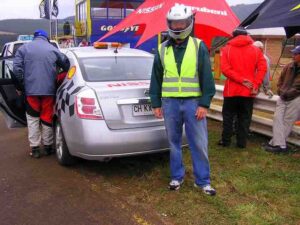
I just happened to have my helmet on. They wanted me to go for a ride. This was going to be fun. I was going to get a ride in the safety car (pace car) at speed.
Rodrigo told me I would need a helmet. That seemed odd. Normally, the pace car just glides around the track at much less that race speed. Nevertheless, I donned a full-faced helmet. It was a couple of sizes too small. That just goes to show that those that say I “have a big head” are probably right. With my height, I have a difficult time getting into a car with a race-driving helmet on. Without a helmet I only clear the door by an inch or two. With a helmet it requires a major “neck stretch” to get me in the cockpit.
I soon discovered why I needed a helmet. Before the race began, the pace car driver took me around the track for a few laps. I’m not sure Jimmie Johnson could have driven me around Watkins Glen any faster! I had a racing helmet and a standard passenger car shoulder belt on. I also had marks from both feet trying to punch a hole in the floorboard of the passenger’s seat. Now I know how Carol feels when I drive.
Access is king.
Nevertheless, it was fun. This is what I mean by “access”. You either have it or you don’t. When we completed our practice laps it was time to pace the field for the start of the race. This was fun as well. I was able to take some great photos. Don’t miss ‘em. I always like to do a thing or two each day that scares me just a little bit on my foreign trackchasing adventures. My ride in the pace car met that goal.
Yo no habla Espanol.
Like many foreign countries I visit, there really isn’t much English spoken by the local population. This is especially true the further I get from big cities. You can just imagine how many people speak a foreign language 100 miles or more from the big cities near where you live. Not many is my guess. They didn’t speak any English at the concession stand either.
I have eaten very well on this trip at each restaurant stop. That would be true at the track today as well. It took some interpreting but I soon learned the concession stand was serving a beef sandwich. They had both avocado and mango sauces to brighten up the dish. It was served on a china plate with real silverware. You won’t see that anytime soon at Eldora.
It’s the ambience baby.
The racing was fun. However, the “ambience” of the event far overshadowed everything else. It was just fun “being there”. By that I mean watching the people, comparing how things are done at a racetrack in Chile compared to the U.S. and other places and that sort of thing.
All of the P.A. system announcements were in Spanish. The announcer was entertaining and really got into it. You’ve probably heard those TV soccer announcers that yell “Goooooooooooooooooooooooaaaaaal!” on Sports Center. Today’s announcer had a similar call whenever there was contact or a pass for position on the track.
From what I could tell each race was for 16 laps. Caution flag laps counted as “laps run in competition” as Windy McDonald used to say at the now defunct Manzanita Speedway. Every class ran two races, except the Formula 3 group raced just once.
The motorcycle racers rocked.
I found the motorcycles the most entertaining. They were fast! They also appeared to be ridden by crazy (loco) people. The track’s main straight was probably 600-800 yards long. One rider entered the straight doing a wheelie at what had to be more than 100 M.P.H. He temporarily lost control, got back on two wheels, and went off the asphalt track to the right. Here was a three-foot wide grass surface that separated the asphalt part of the track from the guardrail. For about 200 yards, he rode down that rain-slicked grass path with the guardrail three inches from his right leg at more than 100 M.P.H. He never got off the gas for a second. I’d like to be the beneficiary for his life insurance policy.
It was time to head for home.
After being at the track for five hours, it was time to head up the road. This had been a full experience. I got to do so much. Rodrigo was the perfect host. Thank you TC2000 of Chile! Maybe I’ll be back some day.
My drive from the racetrack to Santiago would be 400 miles. However, I didn’t have to be back to the Santiago airport until 6 p.m. on Monday night. Remember this was Sunday. That would give me time for some more sightseeing. I try to build in as much sightseeing time as I can on these trips. To me they are not really “trackchasing” trips but “mini-vacations” that take me all over the world.
The main north-south highway in Chile is “Ruta 5”. It’s a four-lane highway that offers limited access to folks getting on or off. In some places there are more pedestrians either walking or riding bicycles along the side of the road than there are cars. My experiences in South America, Africa and Mexico tell me this is common. I suspect many residents of these areas don’t have cars. No car, means walking or taking the bus. More on buses later. I will say it takes some “confidence in your fellow man” to walk within three-feet of an oncoming car doing 120 K.P.H.
Living (eating) dangerously.
Chile had many many roadside stands selling fruits and vegetables and even cooked food. I first started eating meals at these kinds of stands, with J.J. in Mexico. Have you ever stopped at one of these roadside food stands? Again, this fits into “doing something a little bit dangerous” each day!
I was intrigued by stands advertising “tortillas” and other things in Spanish that I couldn’t understand. I had to stop. The place I stopped at was selling “quesos” or huge “rounds of cheese”. I didn’t have much use for an entire round but I did buy a big “hunk” of a light yellow cheese. With it I ordered a tortilla. No, this was not like a tortilla from your local Taco Bell. It was a huge “round of bread” about two inches thick. I would end up dining on tortilla bread, cheese and Diet Coke. It rivaled the stops we’ve made in the Napa Valley.
Carol would have loved to say, “I told you so’.
I am somewhat famous (infamous?) for driving my rental cars until the orange fuel warning lamp is glowing bright red and literally yelling, “Stop, I can’t go another mile”. Maybe my Econorent Racing Toyota Yaris was yelling to me in Spanish and I didn’t understand. I knew I was low on gas. I expected a gas station to be showing up sometime soon. It didn’t.
You’ve probably seen those NASCAR drivers run low on fuel on Sunday afternoon. Normally they swerve the car back and forth to get that last bit of fuel from the tank to the engine. I operate with the same fuel strategy the “NASCAR boys” do. When I pit I put fuel in until it overflows onto the side of the car. I don’t pit again until the engine is gasping on fumes. Normally, this is an outstanding strategy. Not today!
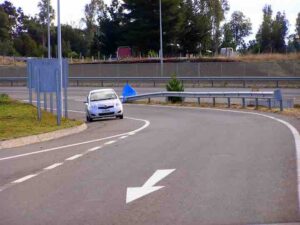
This is not a good picture. That’s my car. Why is my car stopped? I ran out of gas! Luckily, I was close enough to a toll booth to get some help.
When the engine stops, you’re out of gas.
If you’re ever driving a Toyota Yaris you might want to listen up. When the engine shuts off from lack of fuel it doesn’t start up again. It doesn’t sputter. It doesn’t respond to swerving the car back and forth again to slosh more fuel up to the engine. It just dies! Then, as you might imagine, the car rolls to a stop. That’s a bad feeling. It’s an even worse feeling when you’re in Chile!
I had some good luck (not much actually) and some bad luck on my side. The good luck was that I ran out of fuel just 500 meters from the next tollbooth. The bad luck (unbeknownst to me at the time) was that I was just four miles from the next gas station.
A Toyota Yaris doesn’t weigh much. Even I can push it down hill. I pushed it down hill until I was less than 100 meters from the tollbooth. The tollbooth would have a phone. They could call for help. The story might have been much different if I had stopped miles from anything, which statistically was the most likely thing that should have occurred.
Yo no hablo Ingles.
If you guessed the two tollbooth operators, in what was a very rural toll booth stop, didn’t speak English you would be right. I was surprised they didn’t even know what the word “gasoline” meant. However, I wasn’t going anywhere until we “communicated” so I had nothing to lose. Soon they began to understand. They made a phone call on my behalf. Then I waited.
Yes, I cooled my heals for nearly two hours. First, I read the USA Today. No, I didn’t have a copy of the paper with me. I read it off my iPhone. When I was up on all the news, I turned my attention to a family who had a less than modest (O.K. it was mostly a shack) dwelling less than 100 yards from the toll booth. It looked like there was a mother, father and maybe four kids. They kept busy doing outdoor chores. They moved lots of “stuff” from one place to the next with a wheelbarrow. Then the kids offloaded a pickup truck bed full of wood one log at a time.
Not even two pesos to rub together.
These folks probably didn’t have two pesos to rub together. Nevertheless, they looked like they were having fun especially unloading those logs. It reminded me that we didn’t have much when I was growing up. If it weren’t for the “Masters twins” giving me most of their paper route collection money in competitive games of basketball, I wouldn’t have had two pesos to rub together. Despite our being poor, it never dawned on me at the time that we were. I suspect that was the case with the Chilean kids I observed today.
My kingdom for a liter of gasolina.
Finally, at nearly the two-hour mark a pickup truck pulled up with lights flashing. The driver put a gallon or two into my tank and charged me 4,000 pesos (about $8). That wasn’t bad. I tipped him ten bucks. It was worth it.
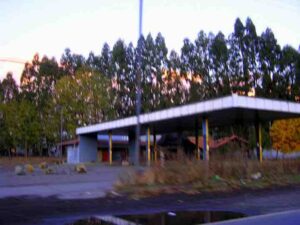
I only had a gallon of gas. My GPS directed me to the nearest gas station. It had burned down recently! Would I run out of fuel again?
At this point, I didn’t know where the next gas station was. I asked the toll road clerks but the language barrier prevented me from getting a definitive answer. I turned to “Gonzalo” who told me the next exit had a gas station in their small town. It was now nearly 7 p.m. on “Domingo” or Sunday evening. That wasn’t good. I headed for that station only to find it had burned down. Often times the truth is weirder than fiction. As Larry the cable guy might say, “I don’t care who you are, that’s just funny”. Now, I worried about the small amount of gas I had just gotten getting me to the next filling spot.
I decided to cast my lot with “Ruta 5”. That’s when I learned I had been just four miles short of nirvana when my Toyota stopped. The gas station attendant (you can’t fill your own tank in Chile) filled it to the brim. I won’t run out of gas again…..at least on this trip.
I still had some driving to do. Gonzalo told me the next closest hotel was about 50 miles away in Concepcion. I had stopped there on my first day in Chile looking for earthquake damage. I was going back to see what I could see from the fifth largest earthquake on record. What Gonzalo did not tell me was that the route would take me over the mountains. It was now dark. I had been outside in the cold, wind, and sun all day. I was tired, but I had no choice. Hotels are not as plentiful in Chile as they might be where you live. I had to be patient. Just keep the car between the white lines and don’t get hit by an oncoming pre-Vietnam war bus that wasn’t staying between the white lines.
Keep the doors locked.
At nearly 10 p.m. I reached Concepcion. This is the second largest city in Chile. It’s a little rough around the edges. I remembered my “pre-trip research” telling me to keep the doors locked when doing stop and go driving in the city. I did that. When I stopped at red lights people came out of the shadows offering to wash my windshield. That’s never a good sign.
Finally, Gonzalo directed me to my hotel. Gonzalo wasn’t as good as Garth, my hometown GPS hero. Gonzalo doesn’t have the detail that Garth does and Chile doesn’t have as many amenities as the U.S. does regarding numbers of hotels, gas stations, etc. Nevertheless, Gonzalo got me to the Hotel Alonso de Ercilla.
I’ve seen worse.
I must admit, it didn’t look the best from the outside. However, what choice did I have. I’ve stayed in worse and that was in Massachusetts! I entered the hotel to find it somewhat of a rundown “boutique” hotel. The emphasis seemed to be on “rundown” more than “boutique”. The rates was reasonable and it included breakfast. I accepted their offer.
Remember, just five weeks ago, folks in Concepcion slept outdoors for fear of building collapses after more than 50 aftershocks from the big quake. This hotel didn’t look like it could withstand the 51st aftershock.
Parking my car at the hotel was a treat. Their parking “garage” was a huge warehouse like those where “Jack Bauer” has those classic gun battles on “24”. My room was small. Even my laptop seemed too large for the room. It was nice to have a Wi-Fi connection. This allows me to tell the family I’m safe but I didn’t necessarily tell them that I wasn’t all “that safe”. They can read about the details of these trips at www.randylewis.org.
Day 5 – Monday.
It was time for some more sightseeing.
I slept soundly in my small old hotel room. It was quiet. The morning shower worked well. That’s always a blessing. The hotel’s breakfast was good too. Overall, not a bad value for $60 U.S.
My plan for the morning was to visit Dichato. This is the small Chilean town just 25 miles north of Concepcion that was devastated not so much by the earthquake but by the tsunami wave that hit the seaside village.
Close-up it was easier to see damage from the world’s fifth largest earthquake.
Before I got my car, I took a brief walking tour of Concepcion. It was then that I saw some significant but not widespread earthquake damage. You won’t want to miss these pictures. One 10-15 story office building has the top five or more floors “pancaked” into the main part of the structure.
It was an interesting drive from Concepcion to Dichato. The distance was less than 25 miles. Dichato bore the brunt of the tsunami wave that arrived following the earthquake. This small town home to 3,000 people was 90% destroyed. Some 50 people lost their lives. The death toll might have been greater except for the good fortune of some teen-agers who were at the beach drinking. They noticed the sea retreating and ran through the village warning everyone to get to higher ground.
I wanted to see for myself.
I wasn’t sure if I would be allowed to see any of this tsunami damage or not. I was especially interested in the effect of the tsunami wave because my hometown of San Clemente, California is in a potential tsunami area. See this article from the local Orange County Register regarding the potential for a tsunami following the earthquake in Chile in our town. We live exactly 100 yards from the beach, so this subject is of interest to me.
Sin pasar (no pass).
When I got within one mile of Dichato, I was stopped by members of the Chile army. That wasn’t very surprising. Despite the seriousness of the disaster, my encounter with the soldiers was somewhat comical. They didn’t speak English and I didn’t speak Spanish.
They weren’t going to let me go any further than I was. It was especially bad when the soldier peered into the interior of my car and saw my camera on the seat. I’m sure he was thinking “tourist” but he said something about “press”. That made me think he might allow me in.
I got the bright idea to give him my trackchasing business card. In the past, my card has gotten me past barriers in foreign countries. It always pays to “look official”. Then it dawned on me that the slogan on the back of my card reads, “If you’re lucky enough to live at the beach, you’re lucky enough”. Wolf Blitzer probably doesn’t have that on the back of his CNN business card.
Fortunately, the solider couldn’t read English (I don’t think!). Anyway, they made me turn around and head back where I had come from. Nevertheless, I did get some photos of the sea in the town next door to Dichato. It will give you an idea of what these people faced.
Tsunamis.
My research on this event tells me there were seven tsunami waves. Here’s the way it works. First the sea retreats from the shore. Often times the sea moves back many hundred yards leaving fish lying on the new “beach”. Local residents will sometimes go out to retrieve the fish and then be washed away when the wave comes back in with much ferociousness. This is what happened with the devastating tsunami in Thailand.
In Chile, the sixth of seven waves was the strongest. The height of the wave was measured at eight feet. Can you imagine a wall of water measuring eight feet rushing through where you’re at right now without warning? Tsunami waves are a very frightening thing.
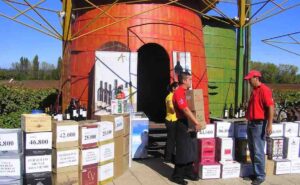
The fellow carrying the wine to my car is a former cruise ship worker. He wants to bring his family permanently to the U.S. I hope he makes it.
Gifts for my loved ones.
The rest of my drive back up into central Chile was non-eventful. I stopped for lunch at a beautiful vineyard. Following lunch, I bought some bottles of Chilean Ramirana wine, both Syrah and Cabernet Sauvignon. These would make excellent souvenirs for my family back home, who are all wine drinkers of one sort or another.
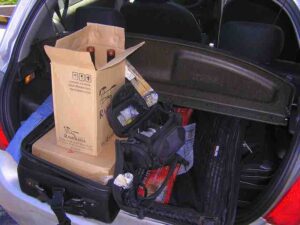
I brought my bags to Chile filled to the brim. How was I going to fit 12 bottles of wine in my existing luggage? Somehow I managed.
Where would the wine go?
I had just one problem. I had no space for 12 bottles of wine. I had one piece of carryon luggage and my computer bag. Both of those were jam packed with what I BROUGHT to Chile. When I put the two cases (six bottles to a case) of wine in my carryon bag, it filled 90% of the bag. The bottles weren’t that well packed in the cardboard wine cases either. I could hear the bottles clanging against each other. I had to be creative. I used my dirty laundry to “cushion” the space between bottles. Then I jammed as much of my other clothing into the arms of my jacket. There’s always “room for one more” right.
When I went to check my bag, it weighed 23.4 kilograms. That’s about 50 pounds. That’s a lot for a small bag. I had no idea if all or any of the bottles would make it “back alive”. However, with the airport “liquids” policy, I had no choice. I had to check the wine. More than surprisingly, all 12 bottles made it back without breaking.
My flight would not be leaving until late at night. That was good on one account. I would be flying overnight back to Atlanta. I wouldn’t have to get a hotel room! As good fortune would have it I was able to fly in business class back to the U.S. Thank goodness for my trackchasing sponsorships.
Day 6 – Tuesday.
Home sweet home.
I landed in Los Angeles on day six of this trip at about 10 a.m. The entire adventure had been so much fun. However, there was no time to rest at home. J.J. and I had an Angels’ game just nine hours after I landed. After the game, we headed up to Pasadena to spend time with Carol who is babysitting the twins.
The grandbabies know more Spanish than I do. It’s true! We had a blast with them. I’ll be trackchasing somewhat less this year, as we expand our outings with them. When our kids were small, I didn’t trackchase much at all. Family is the most important thing. I can’t wait to spend even more time with Astrid and Mitch as time goes on.
That being said, I was back at the airport for my next trackchasing trip less than 60 hours after I had returned from Chile. The beat goes on.
Thanks for reading about my trackchasing,
Randy Lewis
Alberta’s #1 Trackchaser
You can cut all the flowers but you cannot keep spring from coming.
TRAVEL DETAILS
AIRPLANE
Los Angeles, CA (LAX) – Las Vegas, NV (LAS) – 236 miles
Las Vegas, NV (LAS) – Atlanta, GA (ATL) – 1,740 miles
Atlanta, GA (ATL) – Santiago, Chile (SCL) – 4,695 miles
RENTAL CAR
Comodoro Arturo Merino Benitez International Airport (Santiago, Chile) – auto trip begins
Temuco, Chile – 489 miles
Comodoro Arturo Merino Benitez International Airport (Santiago, Chile) – auto trip ends – 989 miles
AIRPLANE
Santiago, Chile (SCL) – Atlanta, GA (ATL) – 4,695 miles
Atlanta, GA (ATL) – Los Angeles, CA – 2,113 miles
Total Air miles – 13,479 (5 flights)
Total Rental Car miles – 989 (1 rental car)
Total auto and air miles traveled on this trip – 14,486 miles
TRACK ADMSSION PRICES:
Autodromo Interlomas – complimentary
Total racetrack admissions for the trip – Nada
LIFETIME TRACKCHASER COMPARISONS
There are no trackchasers currently within 200 tracks of my lifetime total.
- Randy Lewis, San Clemente, California – 1,531
- Ed Esser, Madison, Wisconsin – 1,262
- Guy “The Kid” Smith, Effort, Pennsylvania – 1,255
Official end of Randy Lewis Racing (RLR) Trackchaser Report
THE COUNTRY LIST
#39!!
RLR – Randy Lewis Racing Lifetime
Trackchasing Countries
# 1 – UNITED STATES OF AMERICA – Peoria Speedway (Mt. Hawley, oval)
# 2 – CANADA – Cayuga Speedway (oval) – Track #174, Nelles Corner, Ontario, Canada
# 3 – AUSTRALIA – Parramatta City Raceway (oval) – Track #180, Granville, New South Wales, Australia
# 4 – UNITED KINGDOM – Northhampton International Raceway (oval) – Track #378, Northhampton
# 5 – NETHERLANDS – Driesum Racetrack (oval) – Track #839, Driesum
# 6 – BELGIUM – Bellekouter oval (oval) – Track #841, Affligem
# 7 – FRANCE – Circuit de Croix en Ternois (road course) – Track #843, Saint-Pol sur-Ternoise
# 8 – GERMANY – Nurburgring (road course) – Track #844, Nurburg
# 9 – NEW ZEALAND – Western Springs Speedway (oval) – Track #1,134, Western Springs
# 10 – MEXICO – Triovalo Bernardo Obregon (oval) – Track #1,281, Tiajamulco de Zuniga, Jalisco
# 11 – BARBADOS – Bushy Park Racing Circuit (road course) – Track #1,296, Bushy Park
# 12 – THAILAND – Bira Circuit (road course) – Track #1,300, Pattaya
# 13 – SOUTH AFRICA – Durban Grand Prix (road course) – Track #1,315, Durban, KwaZulu-Natal
# 14 – JAMAICA – Dover Raceway (road course) – Track #1,322, Brown’s Town St. Ann
# 15 – SWEDEN – Sturup Raceway (road course) – Track #1,335, Malmo
# 16 – DENMARK – Ring Djursland (road course) – Track #1,336, Tirstrup
# 17 – CZECH REPUBLIC – Automotodrome BRNO (road course) – Track #1,381, Brno
# 18 – AUSTRIA – Lambrechten Stock Car Track (road course) – Track #1,382, Lambrechten
# 19 – IRELAND – Tipperary International Raceway (oval) – Track #1,388, Rosegreen
# 20 – GUYANA – South Dakota Circuit (road course) – Track #1,390, Timehri
# 21 – CHINA – The Guia Circuit (road course) – Track #1,392, Macau
# 22 – COSTA RICA – Autodromo La Guacima (road course) – Track #1,398, La Guacima
# 23 – ANDORRA – Grandvalira Circuit (road course) – Track #1,404, Port d’Envalira
# 24 – ARGENTINA – Circuito Efren Chemolli (oval) – Track #1,406, Buenos Aires, Argentina
# 25 – QATAR – Losail International Circuit (road course) – Track #1,408, Doha
# 26 – BAHRAIN – Bahrain International Circuit (road course) – Track #1,410, Sakhir
# 27 – UNITED ARAB EMIRATES – Dubai Autodrome (road course) – Track #1,411, Dubai
# 28 – COLOMBIA – Autodromo de Tocancipa (road course) – Track #1,415, Tocancipa
# 29 – SPAIN – Motorland Aragon (road course) – Track #1,416, Alcaniz
# 30 – PORTUGAL – Circuto de Murca (road course) – Track #1,417, Murca
# 31 – ICELAND – Kapelluhraum (road course) – Track #1,420, Hafnafjorour
# 32 – HUNGARY – Hungaroring (road course) – Track #1,426, Mogyorod
# 33 – SWITZERLAND – Hock Ybrig (road course) – Track #1,427, Hoch Ybrig
# 34 – ITALY – Vighizzolo d’Este Stock Car Track (road course) – Track #1,428, Vighizzolo d’Este
# 35 – DOMINICAN REPUBLIC – Autodromo Mobil 1 (road course) – Track #1,515, Santo Domingo
# 36 – MALTA – Ta’Qali Race Track (road course) – Track #1,521, Ta’Qali
# 37 – FINLAND – Lake Pidisjarvi Ice Track (road course) – Track #1,524, Nivala
# 38 – JAPAN – Suzuka Circuit (road course) – Track #1,530, Suzuka
# 39 – CHILE – Autodromo de Interlomas (road course) – Track #1,531, Temuco
The ‘International Big 5’ standings.
I spend a good deal of time planning each international trackchasing adventure. It truly is a labor of love. As you can see from the above list of countries where I have trackchased, I got a relatively slow start with my foreign travels.
I guess you could say I have been on a bit of an “international kick” recently. During the last 31 months, I have added 30 trackchasing countries to my list. I just can’t get that “international itch” out of my system. Some of you are part of my “international” only Trackchaser Report distribution list. You receive a Trackchaser Report each time I visit a new country to see racing. I hope you’re prepared to receive a few more in the not too distant future.
- Roland Vanden Eynde, Vilvoorde, Belgium – 44
- Randy Lewis, San Clemente, California USA – 39
- Will White, Quakertown, Pennsylvania USA – 23
- Carol Lewis, San Clemente, California USA – 20
- Chris Economaki, Charlotte, North Carolina USA – 19
CHILE – FAST FACTS*
Chile, officially the Republic of Chile (Spanish: República de Chile), is a country in South America occupying a long, narrow coastal strip between the Andes mountains to the east and the Pacific Ocean to the west. It borders Peru to the north, Bolivia to the northeast, Argentina to the east, and the Drake Passage in the far south. With Ecuador, it is one of two countries in South America which do not border Brazil.
The very shape of Chile is distinctive, a multi-colored ribbon of land 4,300 kilometers (2,700 mi) long and on average 175 kilometers (109 mi) wide. Its climate varies, ranging from the world’s driest desert—the Atacama—in the north, through a Mediterranean climate in the centre, to a rainy temperate climate in the south. Currently, Chile is one of South America’s most stable and prosperous nations. It leads Latin American nations in human development, competitiveness, quality of life, political stability, globalization, economic freedom, low perception of corruption and comparatively low poverty rates. It also ranks high regionally in freedom of the press and democratic development.
HISTORICAL HIGHLIGHTS
About 10,000 years ago, migrating Native Americans settled in fertile valleys and coastal areas of what is present-day Chile. During the 1500s, conquest of the land took place only gradually, and the Europeans suffered repeated setbacks at the hands of the local population. The first general census was performed by the government of Agustín de Jáuregui between 1777 and 1778. The census indicated that the population was 259,646 inhabitants and was composed of 73.5% European descent, 7.9% mestizos, 8.6% Indians and 9.8% blacks. In the late 1980s, the government gradually permitted greater freedom of assembly, speech, and association, to include trade union and political activity. The government launched market-oriented reforms, which have continued ever since. Chile moved toward a free market economy that saw an increase in domestic and foreign private investment, although the copper industry and other important mineral resources were not opened for competition. In January 2006, Chileans elected their first female president, Michelle Bachelet Jeria, of the Socialist Party. On February 27, 2010, Chile was struck by an 8.8 MW earthquake, one of the largest ever recorded in the world. As many as 500 people died; hundreds of thousands of buildings were damaged. The earthquake was also followed by multiple aftershocks. Initial damage estimates were in the range of 15–30 billion USD, around 10–15% of Chile real gross domestic product. On March 11, 2010 the U.S. Geological Survey reported that a 6.9-magnitude quake hit Chile south of the capital, Santiago.
GEOGRAPHY
A long and narrow coastal Southern Cone country on the west side of the Andes Mountains, Chile stretches over 4,630 kilometers (2,880 mi) north to south, but only 430 kilometers (265 mi) at its widest point east to west. Chile is the longest north-south country in the world, and also claims 1,250,000 km2 (480,000 sq mi) of Antarctica as part of its territory.
CLIMATE
The climate of Chile comprises a wide range of weather conditions across a large geographic scale, extending across 38 degrees in latitude. According to the Köppen system, Chile within its borders hosts at least seven major climatic subtypes, ranging from desert in the north, to alpine tundra and glaciers in the east and south east, humid subtropical in Easter Island, Oceanic in the south and Mediterranean climate in central Chile. There are four seasons in most of the country: summer (December to February), autumn (March to May), winter (June to August), and spring (September to November).
TIMES ZONES
Because of the distance between the mainland and Easter Island, Chile uses four different UTC offsets:
- The mainland uses UTC-4, and in summer as daylight saving time UTC-3.
- Easter Island uses UTC-6, and in summer as daylight saving time UTC-5.
DEMOGRAPHICS
Chile’s 2002 census reported a population of 15,116,435. Its rate of population growth has been decreasing since 1990, because of a declining birth rate. By 2050 the population is expected to reach approximately 20.2 million. About 85% of the country’s population lives in urban areas, with 40% living in Greater Santiago. The largest agglomerations according to the 2002 census are Greater Santiago with 5.6 million people, Greater Concepción with 861,000 and Greater Valparaíso with 824,000.
RELIGION
In the most recent census (2002), 70 percent of the population over age 14 identified as Roman Catholic and 15.1 percent as evangelical. The Constitution provides for freedom of religion, and other laws and policies contribute to the generally free practice of religion.
LANGUAGE
The Spanish spoken in Chile is distinctively accented and quite unlike that of neighboring South American countries because final syllables and “s” sounds are dropped, and some consonants have a soft pronunciation. Accent varies only very slightly from north to south; more noticeable are the small differences in accent based on social class or whether one lives in the city or the country.
GOVERNMENT AND POLITICS
Chileans voted in the first round of presidential elections on December 11, 2005. None of the four presidential candidates won more than 50% of the vote. As a result, the top two candidates, center-left Concertación coalition’s Michelle Bachelet and center-right Alianza coalition’s Sebastián Piñera, competed in a run-off election on January 15, 2006, which Michelle Bachelet won. She was sworn in on March 11, 2006. This was Chile’s fourth presidential election since the end of the Pinochet era. All four have been judged free and fair. The president is constitutionally barred from serving consecutive terms.
The Congress of Chile has a 38-seat Senate and a 120-member Chamber of Deputies. Senators serve for 8 years with staggered terms, while deputies are elected every 4 years. The current Senate has a 20–18 split in favor of pro-government senators. The last congressional elections were held on December 11, 2005, concurrently with the presidential election. The current lower house—the Chamber of Deputies—contains 63 members of the governing center-left coalition and 57 from the center-right opposition. The Congress is located in the port city of Valparaíso, about 140 kilometers (84 mi) west of the capital, Santiago.
CUISINE
Chilean cuisine is a reflection of the country’s topographical variety, featuring an assortment of seafood, beef, fruits, and vegetables. Traditional recipes include asado, cazuela, empanadas, humitas, and curanto.
SPORTS
Chile’s most popular sport is association football (soccer). Chile has appeared in seven FIFA World Cups which includes hosting the 1962 FIFA World Cup where the national football team finished third. Tennis is the country’s most successful sport. Its national team won the World Team Cup clay tournament twice (2003 & 2004), and played the Davis Cup final against Italy in 1976. At the 2004 Summer Olympics the country captured gold and bronze in men’s singles and gold in men’s doubles. Rodeo is the country’s national sport and is practiced in the more rural areas of the country.
TOURISM
Tourism in Chile has experienced sustained growth over the last few decades. Most of these visitors come from other countries in the American continent, mainly Argentina; followed by a growing number from the United States, Europe, and Brazil with a growing number of Asians from South Korea and PR China. The main attractions for tourists are places of natural beauty situated in the extreme zones of the country: Throughout the central Andes there are many ski resorts of international repute, like Portillo and Valle Nevado. For locals, tourism is concentrated mostly in the summer (December to March), and mainly in the coastal beach towns.
NATIONAL SYMBOLS
The national flower is the copihue (Lapageria rosea, Chilean bellflower), which grows in the woods of southern Chile.
The coat of arms depicts the two national animals: the condor (Vultur gryphus, a very large bird that lives in the mountains) and the huemul (Hippocamelus bisulcus, an endangered white tail deer). It also has the legend Por la razón o la fuerza (By reason or by force).
The flag of Chile consists of two equal horizontal bands of white (top) and red; there is a blue square the same height as the white band at the hoist-side end of the white band; the square bears a white five-pointed star in the center representing a guide to progress and honor; blue symbolizes the sky, white is for the snow-covered Andes, and red stands for the blood spilled to achieve independence.
* Much of this info comes from my research at Wikipedia.
U.S. GOVERNMENT ADVICE ABOUT CHILE
U.S. citizens entering Chile must have a valid passport. U.S. visitors will be charged a reciprocity fee at the port of entry, and a small receipt for the fee will be stapled in the last page of the passport.
The potential for terrorist activity is low. There has been some politically motivated violence among indigenous communities in southern Chile, none of which has affected Americans. Potential for civil disturbance is low, although demonstrations, sometimes violent, do occur. Particularly violent days are March 29, the Day of the Young Combatant, and the anniversary of the September 11, 1973, coup against the government of President Salvador Allende.
Crime rates are low to moderate throughout Chile and are moderate in Santiago. There have been few violent crimes committed against Americans. However, American tourists are at a heightened risk for pick pocketing, purse or camera snatching, and theft from backpacks and rental cars. Tourists using taxis in Santiago should be alert to possible scams involving currency switching.
Medical care, though generally good, may not meet U.S. standards, especially in remote areas. Although emergency rooms in some major hospitals accept credit cards, many doctors and hospitals in Chile expect immediate payment in cash. Prescriptions written by local doctors and over-the-counter medicines are widely available. Air pollution is a major source of health concern in Santiago, resulting in severe bronchial ailments affecting infants, small children and the elderly.
Driving in Chile is on the right-hand side of the road. Traffic laws in Chile differ from traffic laws in the United States in some respects. Right-hand turns are generally prohibited at red lights unless otherwise posted. Seat belts are mandatory. Several modern toll highways have recently been opened in and around Santiago, dramatically improving transit into and through the city. The new major highways in and around Santiago generally collect tolls through use of an electronic transmitter issued by the concessionaire and placed on the vehicle. “Day passes” may be purchased separately. Vehicles rented at Santiago airport generally are equipped with the electronic transmitter and the rental car companies charge a surcharge for its use. Taxis are plentiful and relatively inexpensive. Drivers should drive with car doors locked at all times, especially in the southern parts of the city and near the airport, as there have been reports of thieves entering cars stopped at traffic lights or moving in slow traffic. Visitors must have an international driver’s permit in order to drive legally in Chile. The international driver’s license must be obtained in the United States before traveling to Chile. Although car rental firms may rent to customers with only a U.S. driver’s license, the police fine foreigners for driving without a valid international permit.
Chile is an earthquake-prone country. Minefields are found in Chile’s northern border with Peru and Bolivia and on the southern border with Argentina in Patagonia. Minefields are generally marked, but markers may have been shifted, become obscured or been vandalized. Travelers should pay attention to markers and follow clearly identified roads and trails when traveling in minefield areas.
Source: U.S. Department of State – April 13, 2010
Official end of RLR – Randy Lewis Racing Trackchaser Report
Click on the links below to see my photo albums of this fun trip to Chile.
Chile – Part 1 – Trackchasing Country #39
Chile – Part 2 – Trackchasing Country #39

